The journey of helping parents adjust to a smaller living space represents one of the most significant challenges facing middle-aged adults today. As Baby Boomers enter their retirement years, their Millennial and Gen X children often find themselves steering through the complex process of downsizing decades of accumulated possessions and memories. This profound shift affects not only living arrangements but also family dynamics, financial planning, and emotional well-being, making it essential to approach the process with both practical strategies and genuine sensitivity.
Key Takeaways
- Start conversations early about downsizing by discussing financial benefits and future living arrangements while respecting emotional attachments to the home.
- Create a structured six-week decluttering timeline with two-hour work sessions and regular breaks to prevent emotional exhaustion.
- Help parents sort possessions into keep, donate, and discard categories while preserving important family mementos and photographs.
- Connect parents with professional resources like financial advisors, estate planners, and downsizing specialists to ensure a smooth transition.
- Establish new traditions in the smaller space and encourage community involvement to maintain family bonds and social connections.
Understanding Your Parents’ Emotional Attachment to Their Home

The journey of helping parents downsize often begins with understanding their deep emotional connection to their home. Research shows that 66% of older homeowners develop strong emotional bonds with their residences, particularly those who have lived in their homes for over 15 years. These attachments rival relationships with pets and close friends, making the prospect of moving particularly challenging.
Several factors contribute to this connection, including nostalgia triggers from years of shared memories and the concept of psychological home – where the residence represents security, autonomy, and personal identity.
Family legacy considerations also play a significant role, as many parents view their home as a generational anchor point. Understanding these emotional ties helps adult children approach downsizing conversations with greater empathy and insight, leading to more productive discussions about future living arrangements.
Assessing Financial Implications of Downsizing
While emotional considerations play a crucial role in downsizing decisions, financial implications often determine the feasibility and timing of such moves for aging parents. Extensive financial assessments should evaluate home equity utilization, potential tax consequences, and long-term care funding options.
Adult children can help by conducting a thorough cost benefit analysis that examines current housing expenses against projected savings from downsizing.
The financial impact extends beyond immediate housing costs, as statistics show that only 18% of families adequately plan for supporting aging parents. Strategic decisions about relocating to lower-cost areas, reinvesting freed-up equity, and establishing emergency funds can greatly improve long-term financial security.
Consulting financial advisors guarantees proper navigation of tax implications while maximizing potential benefits from the shift.
Digital Tools to Streamline the Home Search Process

Modern digital tools have revolutionized how adult children and their aging parents approach the home search process during downsizing changes. Virtual tours and 3D modeling technology enable remote property exploration, allowing families to preview homes together without the physical strain of multiple in-person visits.
These immersive experiences include detailed floor plans and interactive features that highlight important amenities and accessibility features. Comprehensive neighborhood exploration tools help families evaluate community fit through demographic reports, proximity to healthcare facilities, and local amenities.
Digital platforms provide real-time market data, property valuations, and automated scheduling systems that streamline the viewing process. With e-signature capabilities and shared digital portals, families can efficiently manage documentation and communication throughout the downsizing journey, making informed decisions while maintaining close collaboration despite physical distance.
Creating a Timeline for a Smooth Transition
Successful downsizing shifts require methodical planning and a well-structured timeline that accounts for both logistical and emotional considerations.
The recommended approach involves breaking down the process into manageable stages: six weeks for decluttering, four weeks for packing, and two weeks for final preparations.
Timeline flexibility proves essential, as families must incorporate buffer days to handle unexpected tasks or emotional setbacks.
Effective milestone tracking helps maintain momentum throughout the change, while clear role assignment guarantees every aspect receives proper attention.
Adult children should work with their parents to establish realistic timeframes based on physical capabilities and emotional readiness.
Most experts suggest limiting work sessions to two hours and scheduling regular breaks to prevent exhaustion.
This measured approach allows families to maintain steady progress while preserving their parents’ dignity and well-being.
Navigating Legal and Tax Considerations

Before initiating the downsizing process, families must address essential legal and tax considerations that can greatly impact both parents and heirs.
Proper estate planning documentation guarantees smooth shifts and protects assets, while understanding tax implications helps prevent financial surprises.
Working with qualified professionals to navigate these complexities can save significant time and stress for all parties involved.
- Establish power of attorney arrangements to manage financial decisions if parents become incapacitated
- Review existing estate planning documents, including wills and trusts, to reflect downsizing changes
- Understand capital gains tax implications when selling the family home
- Evaluate life insurance policies and debt obligations that may affect the estate
- Consider setting up digital legacy contacts for important online accounts and digital assets
Evaluating Housing Options and Locations
When families commence the journey of finding suitable housing options for aging parents, careful consideration of multiple factors becomes paramount for making informed decisions. Current housing trends indicate strong demand for senior living facilities, with occupancy rates reaching 87.4% and specialized care services expanding to meet diverse needs.
Location selection should prioritize proximity to healthcare services and family, particularly in urban areas where supply remains limited.
Location must be strategically chosen near medical facilities and loved ones, especially given the scarcity of urban senior housing options.
Modern senior amenities now emphasize wellness-focused programs, technology integration, and community-oriented designs that promote both independence and social interaction.
Emerging housing models, including shared living spaces, offer solutions for varying budgets and lifestyle preferences, while specialized care options like memory care and assisted living provide targeted support for specific health needs.
Managing the Decluttering Process

The process of decluttering represents a significant milestone in helping aging parents downsize their living spaces.
Implementing effective decluttering strategies requires a balanced approach of emotional support and practical methods. Successful downsizing begins with acknowledging sentimental attachments while establishing clear organizational systems that promote decisive action.
- Start the process 6-12 months before the planned move to allow time for emotional processing.
- Create digital archives of cherished items to preserve memories without physical clutter.
- Focus on one room at a time using color-coded labeling systems.
- Involve parents directly in decision-making to maintain their sense of control.
- Consider professional senior-specific organizers for complex situations requiring specialized expertise.
Coordinating Professional Support Services
Professional support services play an essential role in streamlining the downsizing process for aging parents and their families.
Professional services, including Senior Move Managers and relocation specialists, provide thorough assistance at rates between $40-$80 per hour, offering expertise in both logistical and emotional aspects of the shift.
Professional relocation experts offer comprehensive support for seniors’ transitions, combining practical planning with emotional guidance at affordable hourly rates.
These experts fragment complex tasks into manageable steps while providing vital emotional support through empathetic listening and mediation. They coordinate with healthcare providers, financial planners, and community resources to create a seamless shift plan.
Additionally, they help preserve family legacies by carefully managing sentimental items while reducing overall possessions. Their partnerships with senior living communities and experience in space optimization guarantee that aging parents can smoothly transition to their new living arrangements while maintaining dignity and comfort.
Balancing Family Dynamics During the Move

Modern family structures present unique challenges during parental downsizing, as diverse household compositions and economic pressures greatly impact the coordination of support among family members.
Understanding shifting family roles and caregiving dynamics becomes essential when managing the complexities of blended families, single parents, or cohabiting arrangements during the moving process.
- Establish clear communication channels between divorced or separated parents to guarantee smooth coordination.
- Distribute responsibilities equitably among siblings, accounting for geographic and economic differences.
- Create flexible scheduling that accommodates work commitments, especially for single-parent households.
- Consider the emotional needs of step-families and maintain sensitivity to complex relationship dynamics.
- Develop strategies to support isolated parents with limited family resources or single-child situations.
Building a Support Network for Long-term Success
Successful parental downsizing extends far beyond the initial moving phase, requiring a well-structured support system that promotes long-term stability and contentment.
Local support groups and community resources play crucial roles in maintaining social connections and addressing ongoing challenges. Professional organizers, downsizing coaches, and senior social programs offer specialized expertise and resource sharing opportunities that help families navigate this shift effectively.
Online forums and social media platforms connect families with others experiencing similar situations, creating valuable networks for advice and emotional support.
Additionally, establishing new traditions and rituals in the downsized space helps preserve family bonds while adapting to change. Regular participation in senior center activities, community celebrations, and intergenerational gatherings guarantees continued social engagement and emotional well-being throughout the adjustment period.
Bottom Line
Helping parents downsize requires a balanced approach of emotional support and practical assistance. By understanding their attachment to their home, managing financial considerations, and establishing a clear timeline, adult children can guide their parents through this significant life change. With proper planning, professional support, and open communication, families can work together to create a positive downsizing experience that honors memories while embracing new beginnings.




